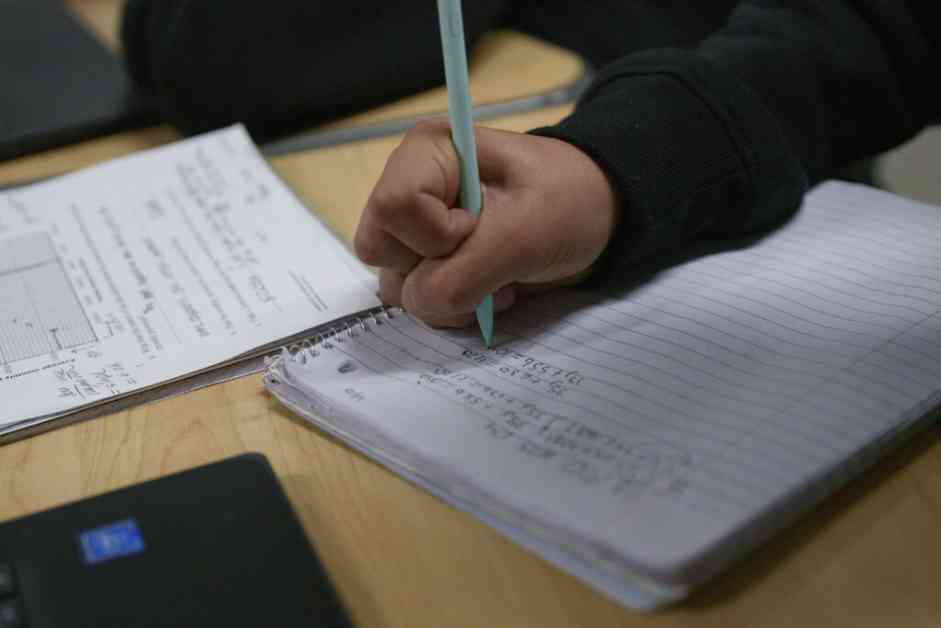A comprehensive analysis of standardized test scores conducted by researchers from Stanford University, Harvard University, and Dartmouth College has revealed intriguing insights into the impact of the COVID-19 pandemic on educational outcomes in California and across the nation. The Education Recovery Scorecard, a groundbreaking database developed by these experts, has shed light on the extent of learning loss experienced by students in the aftermath of the pandemic, highlighting both areas of progress and challenges that lie ahead.
California’s Learning Loss in Perspective
The findings of the Education Recovery Scorecard indicate that California fared slightly better than the national average in mitigating learning loss over the four years following the onset of the pandemic in 2020. This unique tool allowed for a detailed examination of standardized test scores across various districts and states, enabling researchers to assess the extent of learning recovery and identify areas where improvement is most needed.
Notable success stories emerged from districts such as Compton Unified and Monterey Peninsula, which demonstrated significant gains in math and reading proficiency despite serving high proportions of low-income students. Similarly, Chino Valley Unified and Bonita Unified made remarkable strides, with students achieving nearly half a grade level of learning compared to pre-pandemic levels in 2019.
The data, compiled from 43 states encompassing 8,718 districts, including close to 1,000 districts in California, underscores the severity of the decline in reading and math scores nationwide due to the disruptive impact of the pandemic. While no state fully recovered pre-pandemic scores in both subjects, individual districts within California exhibited remarkable resilience, with 31% of students attending districts that surpassed 2019 math scores, and 12% achieving similar milestones in reading.
However, despite these promising trends, California faced significant challenges in narrowing the achievement gap with the national average. In 2019, the state lagged half a grade behind in math scores, a gap that had narrowed to 36% by 2024. Similarly, reading scores exhibited a positive trajectory, albeit with persistent disparities that underscore the need for targeted interventions to support student success.
Insights into Recovery Strategies
The Education Recovery Scorecard not only provides a comprehensive overview of learning outcomes but also delves into the factors influencing student achievement post-pandemic. Analysis revealed widening achievement gaps based on income and race, with high-income districts outpacing their low-income counterparts in recovery rates. Absenteeism, particularly prevalent in high-poverty districts, emerged as a significant barrier to academic progress, necessitating collaborative efforts from community leaders, schools, and policymakers to address this challenge.
Federal funding, including the $122 billion allocated through the American Rescue Plan, played a pivotal role in mitigating learning losses, especially in high-poverty districts. Effective utilization of these resources, particularly in implementing intensive tutoring and extracurricular programs, yielded positive outcomes in student achievement and well-being. The impact of federal investment in public schools during the pandemic was instrumental in limiting academic losses, particularly in disadvantaged communities.
The collaboration between researchers from top academic institutions underscores the urgency of applying lessons learned from the recovery phase to long-term educational challenges. Economist Tom Kane emphasized the importance of leveraging evidence-based strategies to address literacy gaps and reduce absenteeism, signaling a shift from short-term recovery efforts to sustainable solutions that promote student success and well-being.
California’s commitment to educational excellence is further underscored by the allocation of $6.8 billion in state funding to support learning recovery initiatives through 2027-28. Designed to address critical areas such as tutoring, mental health, and student well-being, this funding represents a second chance for districts to accelerate academic progress and foster a culture of continuous improvement in education.
In conclusion, the Education Recovery Scorecard serves as a valuable tool for policymakers, educators, and community stakeholders to assess progress, identify areas for improvement, and chart a course towards educational excellence. By leveraging data-driven insights and evidence-based practices, California is poised to lead the way in supporting student success and ensuring equitable access to high-quality education for all learners.
